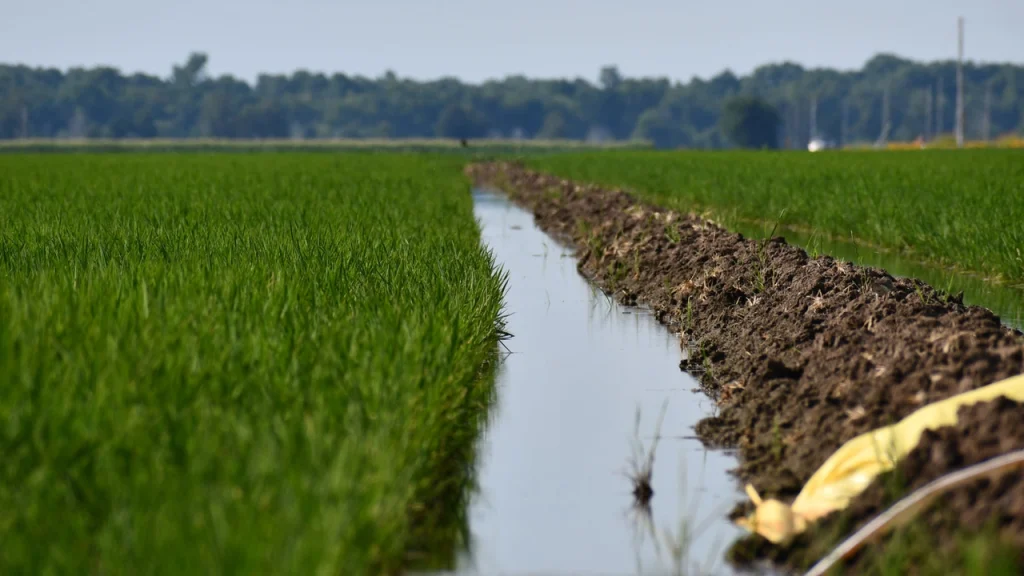Tags
Rice seed availability tightens even more for 2025.
Planted rice acreage that was once predictable has shifted patterns, with acres inching higher the past three consecutive years. That, in addition to hurricane weather, tightened seed supply for one of the largest players in the market.
Whitney Shannon Haigwood, Staff Writer

At a Glance
- Planted rice acreage has increased the pasts three consecutive years; no longer the predictable pattern we were once used to.
- Hear from three companies about 2025 rice seed availability, including Horizon Ag, RiceTec, and Nutrien.
Planning next year’s crop involves many factors, and for Midsouth rice farmers, a tighter seed supply is one big consideration. Here is what three seed companies had to say about rice seed availability in the coming growing season.
Seed production goes hand in hand with planted acres. For over a decade, planted rice acreage was quite predictable. However, that predictability shifted in recent years, leaving little rice seed to carryover.
To better understand the situation, Farm Press spoke with companies in the rice seed arena: Tim Walker, CEO of Horizon Ag; Garrison Hardke, U.S. Marketing Manager for RiceTec; and Scott Greenwalt, Regional Rice Agronomist at Nutrien Ag Solutions.
Unexpected acreage shift
Walker said rice seed production is very calculated year in and year out. “It is not just on what our markets are doing, but also what corn, soybean, and Latin American markets are doing. That all goes into our prediction in terms of how much we need to produce.”
Since 2010, U.S. rice acres were in what Walker described as an “up-down” cycle. Year over year there was a swing of around 300,000 acres. Typically, even years were higher planted rice acres at 2.3 and 2.5 million overall. Odd years saw more like 1.9 to 2.1 million planted acres.
That pattern reversed in 2022, when the expected increase in rice acreage from the year before did not happen. Then, 2023 was a big rice year. Acreage remained up in 2024. As a result, seed supply tightened.
This led RiceTec, the largest player in the rice seed market, to increase production acres in 2024. Hardke said, “The increase in rice acres for 2023 exhausted RiceTec’s inventory and led to historically low returns. As much of the increase was a planting time decision, our ability to increase production acres was limited, leading to short supplies for 2024.”
Unfortunately, weather impacted the 2024 seed crop, when RiceTec’s primary production area in Texas suffered property damage caused by Hurricane Beryl. Then rains further reshaped the plan.
“It rained for 10 days straight, and a lot of those areas got 20-plus inches of rain, which increased disease pressure and led to poor grain fill in a critical time,” Hardke said. The adverse weather led to a 30% reduction in planned supply for 2025.
Hardke said, “At RiceTec, our first priority is our obligation to our growers and the industry. As soon as we realized what was happening, and we knew we were not going to have the seed supply we had hoped to have, we tried to get that information out as early as possible, so farmers could make or change their plans.”
Looking ahead, rice acres are anticipated to remain up in 2025. Ultimately, farmers may not get the exact variety or as much of a variety as they want. Hardke said RiceTec loyalty customers will have priority. Then other companies are prepared to pick up the slack.
For Horizon Ag, Walker said they overproduce seed annually. This year was no different and they can handle a 30 to 40% increase over 2024. “We realize with other shortages in the industry, we will be called on by non-traditional customers and we will do our very best to accommodate the demand.”
As for Nutrien, Greenwalt said, “Generally speaking, we are in pretty good shape with seed supply. Based on our 2-year production plan, we are sitting in position for 400,000-plus acres.”
Best advice for planting rice in 2025
Much of the agricultural infrastructure in the Midsouth is centered around rice. Farmers are locked into the high revenue crop with equipment, grain storage, and labor. They rely on the cash flow of the rice crop to maintain the stability of their operations.
This could leave farmers with big crop planning decisions this year, and each company provided perspective. Greenwalt said, “The earlier that growers have a plan in place, the better a retail location is going to be able to accommodate them.”
If supply of a particular variety is short, Greenwalt said growers should focus on picking the herbicide technologies they need most. Then, consider the planting window and how that fits into the scheme of adjacent crops.
Hardke added that kicking the season off right is key, especially knowing the status of rice seed supply. “If we do not have enough to plant the first time, we certainly do not have enough for replants. You want to put that crop in a good situation with a good seed bed, adequate soil moisture and soil temperature, and we must start clean.”
Rotating crops is another consideration. Hardke hopes that farmers evaluate where they truly need rice acres. “It has to do with soybean yield potential on a particular field. There are some fields that can make an adequate soybean yield. So where do you need that rice acreage the most?” he said.
Another piece of the puzzle is seed quality. Walker emphasized the importance of knowing whether your seed is certified. Seed laws require germ testing, and certain requirements must be met for the seed certification.
“I think growers need to understand that those state and national seed laws are there to protect them, and the integrity of companies. We firmly believe that our integrity is much better validated by a third party, a tried and trusted non-biased agency,” Walker said.
https://www.farmprogress.com/rice/rice-seed-availability-tightens-for-2025Published Date: January 10, 2025






